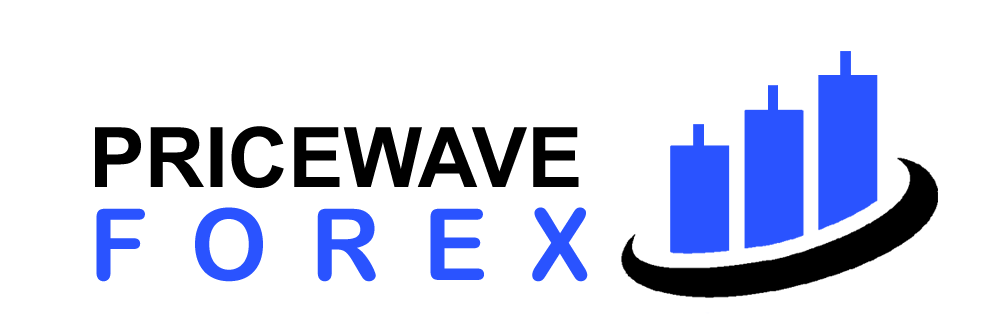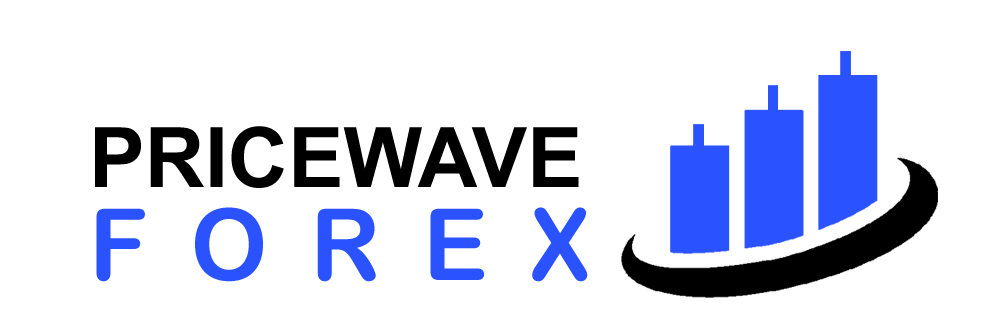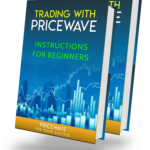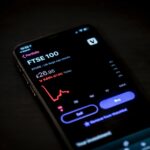.jpg)
Welcome to the thrilling Forex trading world! This article will give you all the basics you need to start in this fast-paced market. Master the art of foreign exchange and open up new possibilities to gain financial freedom.
Let’s plunge into the details of Forex trading. The market runs on a decentralized system where currencies are bought and sold based on their changing values. As a trader, your aim is to predict these cost movements and make profitable trades.
A key part of Forex trading is understanding how currency pairs work. Each pair consists of a base currency and a quote currency. For example, in the EUR/USD pair, 1 Euro is worth a certain number of US Dollars.
To be successful in Forex trading, you must learn to analyze the market. Technical analysis involves studying graphs and using various indicators to predict future price movements. Fundamental analysis, on the other hand, focuses on economic factors that can affect currency values.
To get started on your Forex trading journey, get reliable platforms and tools such as MetaTrader 4 or 5. These platforms offer helpful features like real-time charts, customizable indicators, and risk management tools for a smooth trading experience.
Understanding Forex Trading
To understand forex trading, delve into the sub-sections: what is forex trading and the benefits it offers beginners. Learn the ins and outs of this dynamic market to gain the knowledge and confidence needed to embark on a successful trading journey.
What is Forex Trading?
Forex trading involves buying and selling currencies on the foreign exchange market. It’s a decentralized market where currencies are traded in pairs, for instance USD/EUR or GBP/JPY. The aim is to make money from changes in exchange rates.
As an investor in forex trading, you have the chance to take part in a global market that trades roughly $6.6 trillion daily. The market operates 24/7, five days a week, providing flexibility and the potential to trade whenever you choose.
An interesting feature of forex trading is leverage. It allows traders to manage large positions with a smaller amount of capital. This can amplify both profits and losses, so it’s essential to have a sound understanding of risk management.
It’s important to note that forex trading includes speculation and carries natural risks. It calls for careful analysis, strategy development, and consistent monitoring of market trends. Nevertheless, with the right knowledge and experience, it can be a beneficial investment option.
Investopedia states that forex trading has been around since the early 1970s when free currency exchange rates were launched globally.
Benefits of Forex Trading for Beginners
Forex trading has lots of advantages for newbies to take advantage of! Let’s look at six key benefits:
- Liquidity: Currencies have a consistent demand and supply, making it easy to enter and exit trades.
- Accessible: Trading is open 24/7, so beginners can choose when works best for them.
- Low capital: You don’t need a lot of money to start. Beginners can start small and increase investments as they gain experience.
- Leverage: With leverage, beginners can use smaller amounts of capital to control bigger positions.
- Diverse markets: Many currency pairs to trade, so you can diversify investments and lower risks.
- Educational resources: Lots of resources, like online courses and webinars, for newbies to practice trading strategies without risking real money.
It’s also important to be aware of other aspects of forex trading. Risk management techniques, like setting stop-loss orders, can help protect against losses while potentially reaching desired profits. Joining online communities or forums, where experienced traders share their success stories and challenges, can help newbies grow.
Getting Started with Forex Trading
To get started with Forex trading, dive into the section of “Getting Started with Forex Trading” where you’ll explore the solutions in “Choosing a Forex Broker, Setting up a Demo Account, Learning the Basics of Forex Trading.” Gain insights into finding the right broker, practicing with a demo account, and acquiring fundamental knowledge to kickstart your trading journey.
Choosing a Forex Broker
When you enter the world of forex trading, it’s important to find the best broker. Here’s what to look for:
- Research: Look into brokers’ reputations and regulations.
- Platform: Choose a user-friendly one with analysis tools & data.
- Accounts: Pick a type that fits your goals.
- Customer Support: See if they offer help through chat, email, phone, etc.
- Costs: Compare commission fees, spreads, etc. to get a good deal.
Plus, find someone whose values match yours for even better results. Pro tip: Before plunging into live trading, try a demo account first.
Setting up a Demo Account
Are you ready to start trading forex? First, create a demo account. This way, you can practice without risking your own money. Here’s how:
- Go to a reliable forex broker’s website.
- Fill in the requested info, like name, email, and phone number.
- Download their trading platform and log in with the details given.
In a demo account, virtual funds are used to simulate real market conditions. Fun fact: Investopedia reports that an incredible 90% of novice traders lose money in forex markets.
Learning the Basics of Forex Trading
Forex trading needs prior learning. Here are the essentials to get started:
- Familiarise with currency pairs like EUR/USD, GBP/USD, etc.
- Gain knowledge of technical analysis tools like charts, trends, indicators.
- Fundamental analysis techniques, such as economic indicators, news events.
- Create a plan of entry and exit points, risk-management strategies.
- Use demo accounts to practice without real money.
- Keep track of economic news releases, central bank decisions.
Also, keep in mind the following tips:
- Avoid emotional decision-making.
- Risk-management is crucial.
- Stay updated with new strategies, resources and market insights.
Now, to implement these basics effectively:
- Stick to your trading plan.
- Risk no more than 2-3% of capital per trade.
- Engage in ongoing learning.
Mastering forex trading calls for practice, discipline and adaptability. All the best!
Developing a Forex Trading Strategy
To develop a solid forex trading strategy, dive into the world of technical and fundamental analysis. Understanding technical analysis and utilizing fundamental analysis in forex trading will provide you with powerful tools and insights. These sub-sections will equip you with the knowledge needed to make informed trading decisions in the forex market.
Understanding Technical Analysis
Technical analysis is a must for forex trading. Through examining price patterns and market trends, traders decide when to join or leave a trade. To comprehend technical analysis better, let’s look at some key components.
Here is a table outlining the different facets of technical analysis and their use in forex trading.
| Indicator | Description | Purpose |
|---|---|---|
| Moving Averages | Smoothens price data over time | Finds trends and support levels |
| Relative Strength Index (RSI) | Detects overbought or oversold conditions | Predicts potential reversals |
| Fibonacci Retracement | Observes potential support and resistance levels | Specifies entry and exit points |
Now, let’s discuss something special about technical analysis. An important concept is using oscillators, such as the Stochastic Oscillator. This helps spot overbought and oversold conditions, allowing traders to forecast potential market turns.
Advice: When using technical analysis, it’s wise to mix multiple indicators and tools for confirmation. This enhances the precision of your trading strategy.
Fundamental Analysis in Forex Trading
Fundamental analysis is key for forex trading. It involves evaluating the underlying factors that influence currency prices. Economic indicators, geopolitical events, and market trends are all analyzed to decide when to buy or sell currencies. Let’s dive into the components of fundamental analysis:
- Currency Strength: GDP growth, inflation rates, employment data, and interest rates all affect a currency’s value.
- Economic Indicators: CPI, GDP, and retail sales give insight into an economy’s health. Positive data can lead to increased demand for a currency.
- Geopolitical Events: Political events, like elections and policy announcements, can have huge impacts on currency markets.
- Central Bank Policies: Interest rates and monetary policies affect currency markets. Traders analyze central bank statements and meeting minutes to forecast future policy.
- Market Sentiment: Understanding investors’ views on future economic performance is crucial. This affects currency prices.
Now let’s look at an example. In 2015, Greece had a financial crisis. This caused the Euro to drop against other currencies. Traders who had monitored the situation were ready and sold Euros. They avoided losses while others, who didn’t do their homework, had substantial losses.
This story shows why fundamental analysis is important in forex trading. By being aware of economic events, traders can make better decisions and increase their chances of success.
Risk Management in Forex Trading
To manage risk in forex trading, you need effective strategies. Setting stop loss and take profit levels, and managing leverage and margin are key. By employing these solutions, you can safeguard your capital and optimize your trading potential.
Setting Stop Loss and Take Profit Levels
Forex trading requires risk management strategies like setting stop loss and take profit levels. To do this efficiently, consider these steps:
- Figure out your risk tolerance. Think about your trading experience, financial goals, and emotional stability when making decisions.
- Analyze market trends. Identify important support and resistance levels, which are price points that show potential reversals or trend continuance.
- Set a stop loss level. This will limit your losses if the market moves against you. Place it below or above the identified support or resistance level, based on whether you’re buying or selling.
- Find your take profit level. This ensures profits when the market reaches a target point in your favor. Set it slightly before the next support or resistance area.
Remember to reassess and adjust these levels often, as the forex market is volatile. Furthermore, one popular approach is using trailing stops, which automatically adjust the stop loss level as the trade progresses.
By utilizing stop loss and take profit levels, traders can manage risk and maximize their profits.
Managing Leverage and Margin
Leverage and margin management are essential in forex trading. Knowing and using these tools well can help traders make wise decisions.
Check out the table below for the key aspects of managing leverage and margin:
| Aspect | Description |
|---|---|
| Leverage | Magnifies market exposure, boosting potential gains |
| Margin Call | Alert when account equity falls below required margin level |
| Stop Out Level | Automatically closes trades to avoid further losses |
| Margin Requirement | Minimum funds necessary to open and maintain a trade |
Also, it’s important to keep risks in check by setting suitable leverages, using stop-loss orders, and closely monitoring margin levels.
Fun Fact: BIS (Bank for International Settlements) reports that the global forex market has an average daily turnover of $6.6 trillion as of April 2019!
Practicing Forex Trading
To master practicing forex trading effectively, dive into using demo accounts and join forex trading communities. Harness the benefits of practical experience and valuable insights from the forex trading community to enhance your skills and expertise. Embrace these sub-sections as essential tools in your journey towards becoming a proficient forex trader.
Using Demo Accounts effectively
- Make a plan before starting forex trading. Decide your risk tolerance, style, and time.
- Understand the features of the trading platform of your broker.
- Test strategies on the demo account. Use different indicators, time frames, and asset classes.
- Be realistic in the market. Simulate by adjusting variables like trade speed and slippage.
- Also, keep track of performance, analyze wrong trades, and learn from them.
- Overtrading should be avoided. Monitor all trades and their results to identify patterns. Refine the strategy for better results when you live trade.
Joining Forex Trading Communities
Forex Trading communities can be a great way to grow your skills and knowledge. Here are 6 good reasons to join:
- Hear from successful traders.
- Exchange trading ideas with other members.
- Keep up with the latest forex news.
- Meet people with a similar interest.
- Get mentorship and learn from professionals.
- Access educational resources like tutorials and webinars.
Plus, in trading communities you can have stimulating conversations and learn from different points of view. This can help you adapt to different markets.
Pro Tip: Get the most out of the community by participating, asking questions and sharing your ideas. This will help you grow and build relationships with other traders.
Resources for Forex Trading Education
To enhance your knowledge on forex trading, equip yourself with valuable resources. Dive into the world of forex trading education with online courses and webinars, as well as books and publications. These resources will provide you with the necessary tools and insights to develop your skills and understanding of the forex market.
Online Courses and Webinars
Convenient Learning: Get educational materials at your own pace and convenience with online courses and webinars.
Expert Guidance: Experienced Forex traders share their knowledge during live webinars.
Interactive Sessions: Q&A sessions, polls, and quizzes promote active engagement.
Diverse Topics: Learn about technical analysis, fundamental analysis, risk management strategies, and more.
Continued Support: Chatrooms or forums offer ongoing support even after completing the course.
Case Studies: Real-life examples to illustrate concepts.
Research Access: Up-to-date research and industry trends to understand Forex trading.
Pro Tip: When selecting an online course or webinar, check the credibility of the instructor or organization. Look for reviews or recommendations from reliable sources.
Books and Publications
Ready to dive into the world of forex trading? Here are some noteworthy books and publications to get you started:
- “A Beginner’s Guide to Forex Trading” by Matthew Driver. An excellent starting point for novice traders. Covers the basics, from key concepts to risk management strategies.
- “Forex For Beginners” by Anna Coulling. A detailed introduction to forex trading, with explanations of technical analysis, chart patterns, and fundamental indicators.
- “Trading in the Zone” by Mark Douglas. Examines the psychological aspects of trading, focusing on mindset and strategies to overcome emotional hurdles.
- “Japanese Candlestick Charting Techniques” by Steve Nison. Revolutionized technical analysis with its introduction of Japanese candlestick charting methods. Teaches how to identify patterns for potential trend reversals or continuations.
In addition to these titles, there are many other resources for traders of all levels. From price action analysis to algorithmic trading systems.
To make the most out of these resources, dedicate time regularly to reading educational materials, take notes, and apply strategies in practice through demo accounts. Join online communities or forums to discuss ideas and exchange experiences.
By immersing yourself in forex trading literature, you can gain valuable insights, learn from experts, and develop your own unique approach to trading. Remember, learning is an ongoing process. So, stay updated with new publications for continued success in the forex market.
Conclusion
In short, forex trading can be rewarding for novices keen on entering the world of financial markets. It offers a chance to exchange numerous currencies and maybe earn money due to market changes. Yet, ahead of getting involved, it’s important to remember some fundamental points.
- Knowing the fundamentals of forex trading is essential. This includes understanding terms such as leverage, pips, and currency pairs. Comprehension of these terms enables beginners to navigate the market more confidently and make wise decisions.
- Practicing with a demo account can significantly improve one’s abilities and confidence in forex trading. These trial accounts allow beginners to trade using virtual funds and experience real-time market conditions while avoiding risks. By honing their tactics through practice, traders can refine their skills and get valuable insights.
Moreover, it is important for rookies to create a clear trading plan and stick to it. This involves setting achievable goals, choosing risk management strategies, and deciding entry and exit points for trades. An explicit plan helps traders stay on track and disciplined amid the volatility of the forex market.
Furthermore, staying informed with economic news and events is vital for successful forex trading. Economic indicators such as interest rate decisions, GDP reports, or employment data can greatly influence currency values. Being aware of these events allows traders to predict market movements and grab potential opportunities.
Frequently Asked Questions
1. What is forex trading?
Forex trading, or foreign exchange trading, refers to the buying and selling of currencies in the global marketplace. It involves making profit by speculating on the price movements of various currency pairs.
2. How do I start forex trading as a beginner?
As a beginner, you can start forex trading by following these steps:
a. Educate yourself about the basics of forex trading
b. Choose a reputable forex broker
c. Open a trading account
d. Practice with a demo account
e. Develop a trading plan
f. Start trading with real money but only risk what you can afford to lose.
3. What are the risks involved in forex trading?
Forex trading carries a certain level of risk. The main risks include:
a. Market volatility: Currency prices can fluctuate rapidly.
b. Leverage: Trading with leverage can amplify both profits and losses.
c. Lack of knowledge: Insufficient understanding of market dynamics can lead to poor decision-making.
d. Emotional trading: Letting emotions dictate trades can result in irrational decisions.
4. What are the best currency pairs for beginners?
For beginners, it is recommended to start with major currency pairs such as EUR/USD, USD/JPY, and GBP/USD. These pairs offer higher liquidity and lower spreads, making them ideal for beginners to gain experience and understanding in forex trading.
5. How much capital do I need to start forex trading?
The amount of capital needed to start forex trading can vary. It depends on factors like the leverage offered by your chosen broker, your trading strategy, and your risk tolerance. It is advisable to start with a smaller amount and gradually increase your capital as you gain experience and confidence in your trading abilities.
6. How can I learn more about forex trading?
There are several ways to learn more about forex trading:
a. Join online forex trading courses or webinars
b. Read books written by experienced forex traders
c. Follow reputable financial news sources
d. Join forex trading communities and forums
e. Practice regularly and analyze your trades to learn from past experiences.






